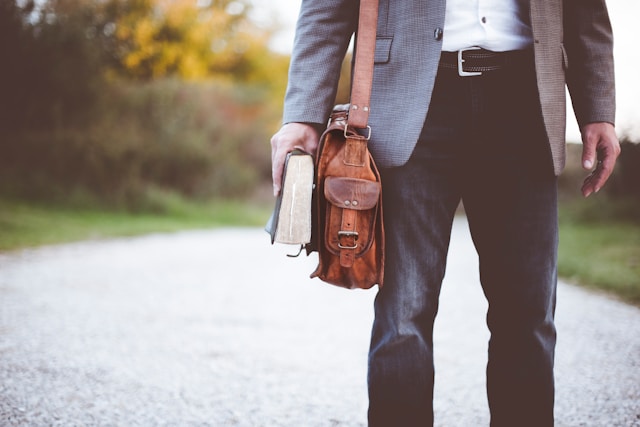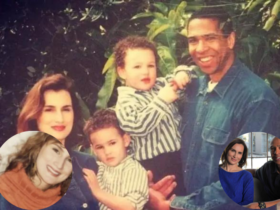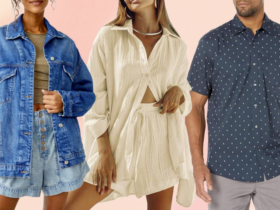Leather belts for men are not just functional accessories that hold up trousers. They are pivotal style statements that can elevate any outfit from mundane to magnificent. Whether you are dressing for a formal event or aiming for a casual look, the right leather belt can make all the difference. In this article, we delve into the essential aspects of leather belts for men, exploring their types, materials, styles, and maintenance tips to ensure you make the best choice and keep your belts in pristine condition.
Types of Leather Belts for Men
When it comes to leather belts for men, there are several types to consider, each suited for different occasions and styles.
Dress Belts
Dress belts are designed to complement formal attire. They are typically made from high-quality, smooth leather and have a sleek, polished appearance. The buckle is usually simple and understated, often in silver or gold. These belts are narrower and designed to fit seamlessly through the belt loops of dress trousers. The most popular colors for dress belts are black and brown, matching the most common shades of formal shoes.

Casual Belts
Casual leather belts for men offer more variety in terms of texture, color, and buckle design. They can be wider and come in a range of finishes, from smooth to textured leather. Casual belts can also feature more intricate buckles and can be paired with jeans, chinos, and other casual pants. Colors can range from traditional blacks and browns to more adventurous hues like tan, navy, and even burgundy.

Western Belts
Western belts are characterized by their ornate designs and larger, more decorative buckles. These belts often feature intricate stitching, embossed patterns, and sometimes even conchos (decorative metal pieces). They are designed to stand out and are typically paired with cowboy boots and other Western-style attire.

Braided Belts
Braided leather belts offer a unique texture and flexibility in fit, as they can be adjusted to any point along the braid. They add a touch of casual sophistication to an outfit and can be worn with both casual and semi-formal attire. The intricate weaving of the leather strands makes them durable and stylish.

Materials Used in Leather Belts
Understanding the materials used in leather belts for men is crucial to making an informed purchase. The quality of the leather determines the belt’s durability, appearance, and overall value.
Full-Grain Leather
Full-grain leather is the highest quality leather used in belt making. It comes from the top layer of the hide and includes all of the natural grain. This type of leather is incredibly durable and develops a beautiful patina over time. Full-grain leather belts are ideal for both dress and casual wear, offering longevity and classic style.
Top-Grain Leather
Top-grain leather is slightly lower in quality than full-grain leather but still offers excellent durability and a smooth finish. The top layer of the hide is sanded down to remove imperfections, resulting in a more uniform appearance. Top-grain leather belts are a good choice for those seeking a balance between quality and affordability.
Genuine Leather
Genuine leather is made from the layers of the hide that remain after the top layers have been split off. While it is the lowest grade of leather, it is still durable and often used in more affordable belts. Genuine leather belts can be a good entry-level option for those new to leather accessories.
Bonded Leather
Bonded leather is made from leather scraps that are bonded together with adhesives and then coated to give a uniform appearance. While it is the least durable of the leather types, it is also the most affordable. Bonded leather belts can be a good choice for those looking for budget-friendly options or trendy, short-term use belts.
Choosing the Right Leather Belt for Men
Selecting the right leather belt involves considering several factors, including the occasion, the outfit, and personal style preferences.
Matching Belt to Shoes
One of the cardinal rules of men’s fashion is to match the belt to the shoes, especially for formal occasions. A black leather belt should be paired with black shoes, while a brown belt should match brown shoes. For casual outfits, there is more flexibility, but coordinating the colors still results in a more polished look.
Belt Width and Fit
The width of the belt should complement the attire. Dress belts are typically around 1-1.5 inches wide, providing a sleek appearance that fits through the loops of dress trousers. Casual belts can be wider, up to 1.75 inches, which suits the broader loops of jeans and chinos. The fit of the belt is also crucial; it should be long enough to fit comfortably, with enough excess to tuck into the first belt loop without dangling excessively.
Buckle Style
The buckle style can significantly impact the overall look of the belt. Dress belts usually feature simple, polished buckles, while casual belts can have more variety, including distressed metals, engraved designs, and unique shapes. Western belts often come with large, decorative buckles that serve as focal points.
Color and Texture
Choosing the right color and texture is essential for creating a cohesive look. Smooth, polished leather is best for formal occasions, while textured or braided leather can add interest to casual outfits. Neutral colors like black, brown, and tan are versatile and timeless, but don’t be afraid to experiment with more unique shades for a modern twist.
Caring for Leather Belts
Proper care and maintenance can extend the life of leather belts for men, ensuring they remain stylish and functional for years to come.
Cleaning
Regular cleaning is essential to keep leather belts looking their best. Use a damp cloth to wipe off any dirt or grime, and avoid soaking the leather. For deeper cleaning, a leather cleaner or a mixture of mild soap and water can be used. Always test a small area first to ensure the solution does not damage the leather.
Conditioning
Leather is a natural material that can dry out over time, leading to cracks and stiffness. Conditioning the leather with a quality leather conditioner helps maintain its suppleness and luster. Apply the conditioner with a soft cloth, working it into the leather in circular motions, and then buff off any excess.
Storage
Proper storage is crucial to maintaining the shape and condition of leather belts. Store them flat or rolled loosely, avoiding tight coils that can cause creases. Keep them in a cool, dry place away from direct sunlight, which can cause fading and drying.
Conclusion
Leather belts for men are timeless accessories that combine functionality with style. Whether you prefer the sleek look of a dress belt, the versatility of a casual belt, or the bold statement of a Western belt, there is a leather belt to suit every taste and occasion. By understanding the different types of leather, choosing the right belt for your needs, and maintaining it properly, you can enjoy the benefits of this essential accessory for years to come. Embrace the elegance and durability of leather belts and elevate your wardrobe with this classic piece of men’s fashion.


















Leave a Reply
View Comments